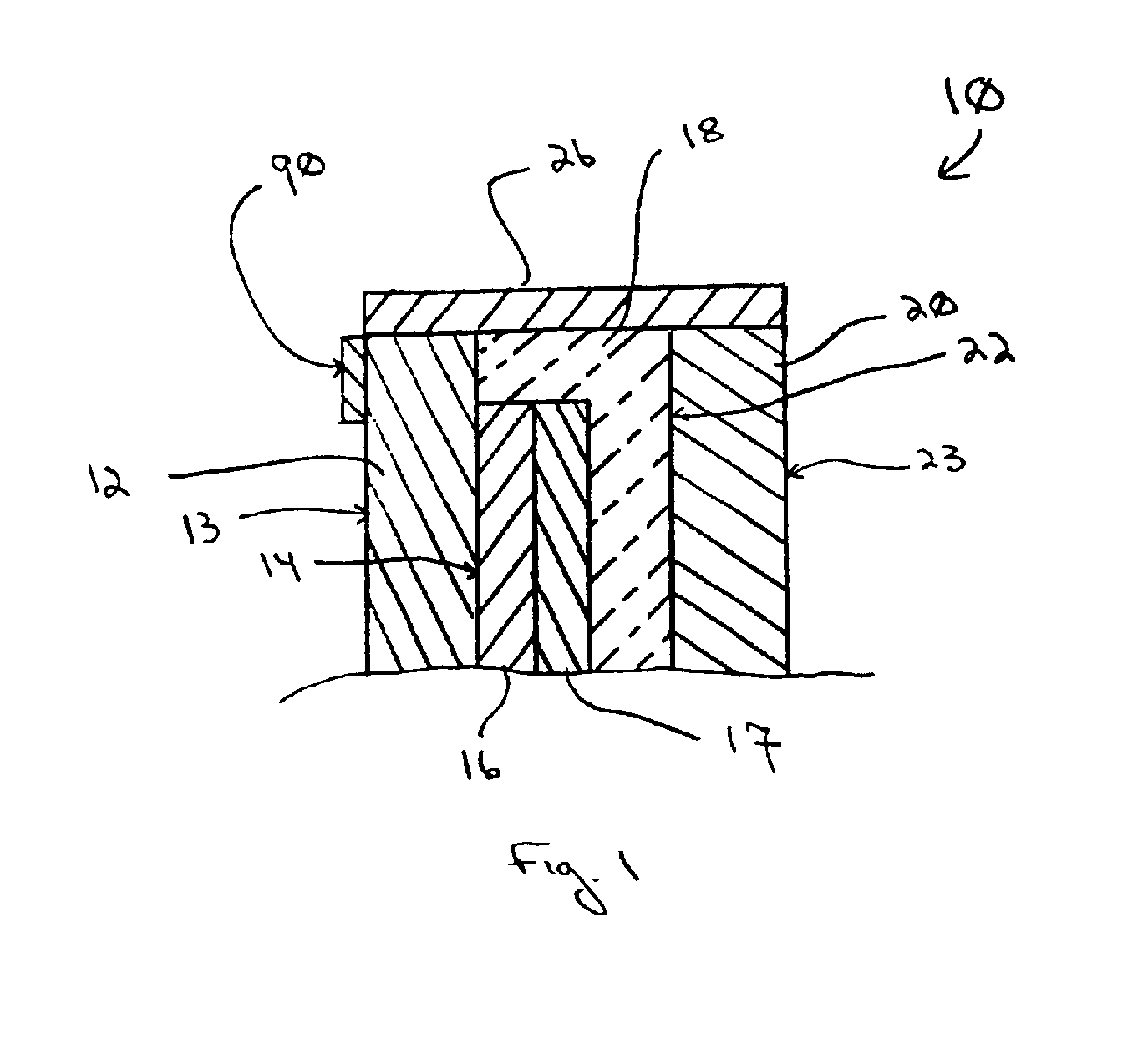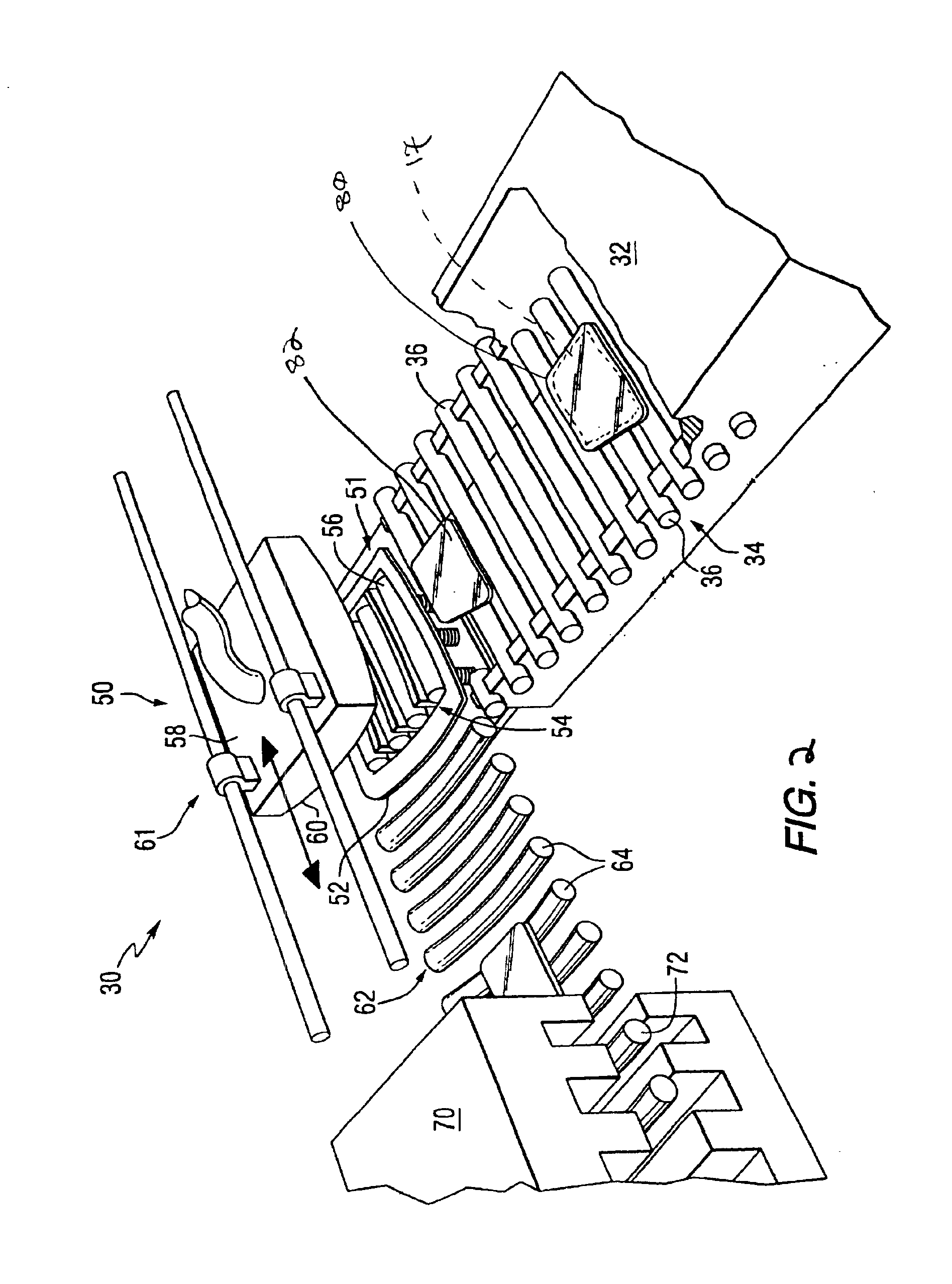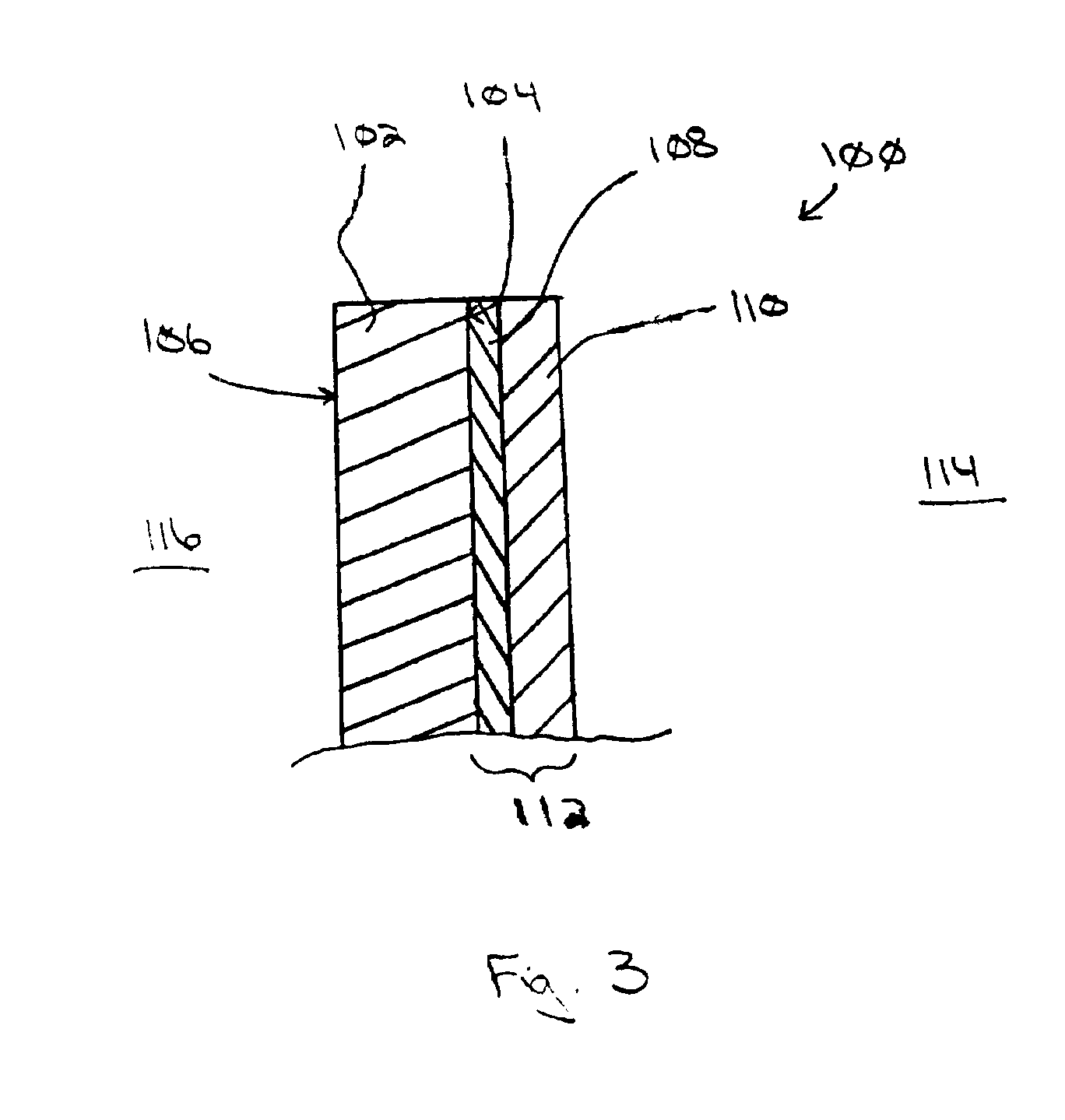Method of making coated articles and coated articles made thereby
a coating and coating technology, applied in the field of coating articles, can solve the problems of coating being susceptible to mechanical damage, and the process of making laminated windshield not easily adapted to making other types of laminated and/or non-laminated automotive transparencies, etc., to achieve the effect of improving heating characteristics and increasing mechanical protection
- Summary
- Abstract
- Description
- Claims
- Application Information
AI Technical Summary
Benefits of technology
Problems solved by technology
Method used
Image
Examples
examples
Several Samples of functional coatings with different protective coatings of the invention were prepared and tested for durability, scattered light haze developed after Taber abrasion, and emissivity. The functional coatings were not optimized for mechanical or optical properties but were utilized simply to illustrate the relative properties, e.g., durability, emissivity, and / or haze, of a functionally-coated substrate having a protective coating of the invention. Methods of preparing such functional coatings are described, for example but not to be considered as limiting, in U.S. Pat. Nos. 4,898,789 and 6,010,602.
Test samples were produced by overcoating different functional coatings as described below (on common soda lime clear glass) with aluminum oxide protective coatings incorporating features of the invention and having thickness in the range of 300 Å to 1.5 microns. The functional coatings used in the tests have high solar infrared reflectance and characteristic low emissivit...
PUM
| Property | Measurement | Unit |
|---|---|---|
| thickness | aaaaa | aaaaa |
| thickness | aaaaa | aaaaa |
| emissivity | aaaaa | aaaaa |
Abstract
Description
Claims
Application Information
 Login to View More
Login to View More - R&D
- Intellectual Property
- Life Sciences
- Materials
- Tech Scout
- Unparalleled Data Quality
- Higher Quality Content
- 60% Fewer Hallucinations
Browse by: Latest US Patents, China's latest patents, Technical Efficacy Thesaurus, Application Domain, Technology Topic, Popular Technical Reports.
© 2025 PatSnap. All rights reserved.Legal|Privacy policy|Modern Slavery Act Transparency Statement|Sitemap|About US| Contact US: help@patsnap.com



